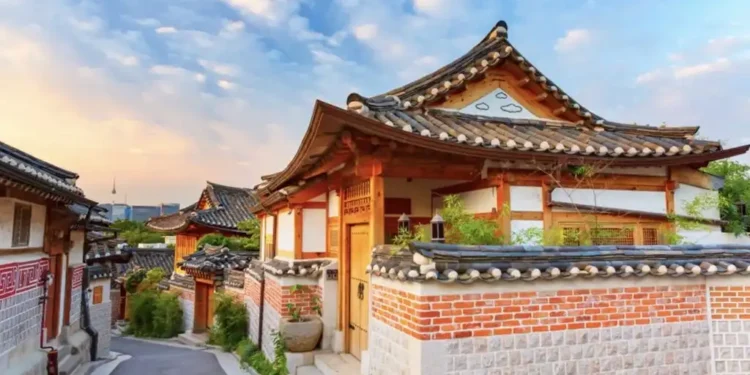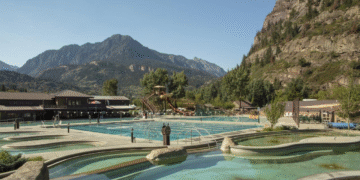Seoul, the vibrant capital of South Korea, is an exciting blend of modernity and rich history. The city is a global cultural hub, offering tourists an unmatched experience with its eclectic mix of art galleries, historical sites, and cultural centers. If you plan to explore Seoul, don’t forget to stay connected with a Seoul eSIM, which makes navigating the city and discovering its hidden gems easier. Here, we look closer at some must-visit art and cultural institutions in Seoul that showcase the city’s creative and historical essence.
National Museum of Korea
The National Museum of Korea is a prime destination for tourists interested in the country’s art and heritage. As the largest museum in Korea, it houses extensive collections, including ancient artifacts, historical documents, and artworks spanning centuries. The museum’s exhibitions provide an in-depth look at Korean culture from prehistoric to modern times. The museum’s immersive displays and educational programs are perfect for families and history buffs alike.
Leeum, Samsung Museum of Art
Operated by the Samsung Foundation, Leeum, the Samsung Museum of Art is an architectural marvel and an iconic cultural landmark. This museum uniquely blends traditional Korean art with contemporary works. The museum is divided into two sections: one dedicated to traditional pieces such as ceramics and calligraphy and the other focusing on modern art, showcasing creations by Korean and international artists. Combining classic and modern styles makes Leeum a unique experience for any art enthusiast visiting Seoul.

Bukchon Hanok Village
Bukchon Hanok Village is not just a tourist attraction but a living museum that tells the story of Seoul’s historical architecture and culture. This picturesque neighborhood is filled with traditional Korean houses called hanoks, which date back to the Joseon Dynasty. Visitors can wander through the narrow alleyways, visit cultural workshops, and even stay in a traditional hanok to experience Korean heritage firsthand. It’s a perfect spot for photography and cultural immersion, starkly contrasting Seoul’s futuristic cityscape.
Dongdaemun Design Plaza (DDP)
Dongdaemun Design Plaza, or DDP, is a futuristic landmark designed by renowned architect Zaha Hadid. This multi-functional space hosts art exhibitions, fashion shows, and cultural events. The curving architecture and interactive installations make it a must-visit for those who appreciate modern design and creativity. The plaza also features nighttime markets and public art displays, ensuring a lively tourist experience. Connecting with a Seoul eSIM allows visitors to seamlessly check the latest event schedules and explore nearby attractions.
Gyeongbokgung Palace
Visiting Seoul would be incomplete without exploring Gyeongbokgung Palace, the most famous of Seoul’s Five Grand Palaces. Built in 1395, it served as the main royal palace of the Joseon Dynasty. Tourists can witness the impressive Changing of the Guard ceremony, explore the palace grounds, and visit the National Folk Museum of Korea in the complex. Gyeongbokgung is an excellent place to learn about Korean history and royal traditions, making it an essential stop for culture lovers.

Seoul Arts Center
Seoul Arts Center is one of the largest arts complexes in Asia. This venue hosts various performances, exhibitions, and events showcasing music, theater, and visual arts. With multiple venues, including an opera house and an art museum, visitors can enjoy world-class performances or view impressive art collections. The center is popular among both locals and tourists for its dynamic cultural programming. Checking out showtimes and tickets online using your Seoul eSIM makes the experience even more convenient.
National Museum of Modern and Contemporary Art (MMCA)
The MMCA is a prominent cultural institution that focuses on contemporary art. It has several branches, with the Seoul location in the artsy district of Samcheong-dong, near Gyeongbokgung Palace. The museum showcases thought-provoking exhibitions and installations by both Korean and international artists. MMCA is perfect for tourists looking to understand the modern art scene and gain insights into contemporary Korean culture. Its interactive and experimental approach appeals to many visitors, from casual tourists to serious art critics.
Insadong and Ssamziegil
Insadong is the heart of traditional Korean culture and crafts. The area has galleries, antique shops, and stores selling Korean handicrafts. One of its highlights is Ssamziegil, a multi-story shopping complex with unique stores selling handmade items, artworks, and traditional souvenirs. Visitors can also try traditional Korean tea in cozy houses tucked within the alleyways. The vibrant street performances and occasional cultural events add to the lively atmosphere of Insadong, making it a tourist favorite.

Changdeokgung Palace and Huwon
Another UNESCO World Heritage Site, Changdeokgung Palace, is famous for its beautiful architecture and secret garden, Huwon. The palace served as a secondary royal villa during the Joseon Dynasty and is renowned for its harmonious integration with nature. Guided tours of the Secret Garden offer visitors a serene escape from the city’s hustle, showcasing meticulously designed landscapes, pavilions, and lotus ponds. It’s an ideal destination for tourists looking to experience Korea’s royal history and tranquil scenery.
Conclusion
Seoul is a city where tradition and modernity coexist beautifully. From royal palaces to avant-garde art museums, tourists can experience a range of art and culture that speaks to the city’s rich past and dynamic present. Don’t forget to stay connected with a Seoul eSIM for seamless navigation and updates as you discover these cultural gems. With so many remarkable places to visit, Seoul promises an enriching and unforgettable journey.













